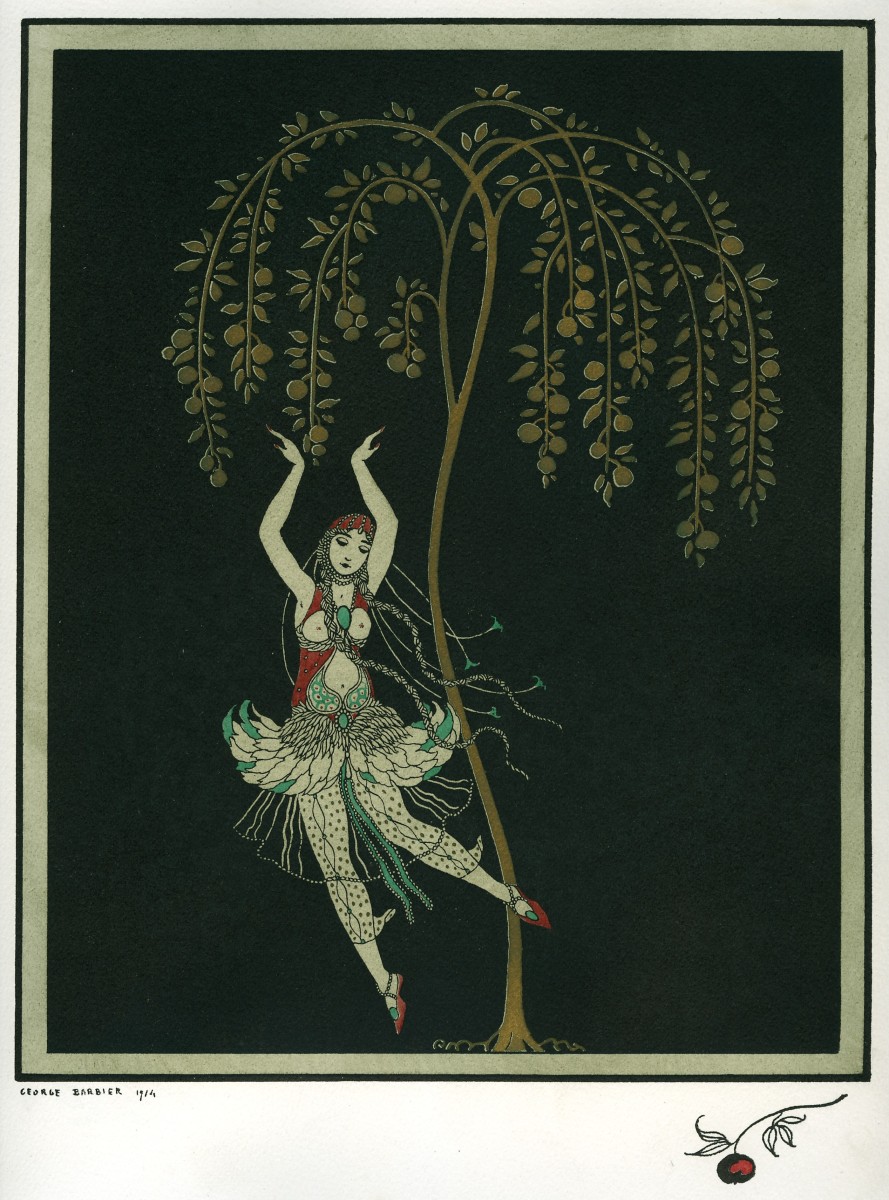Swans and Firebirds (Schwäne und Feuervögel)
Austrian Theatre Museum, Palais Lobkowitz, Lobkowitz Platz 2, Vienna, 25 June to 27 September 2009

Like many other museums, galleries and libraries around the world, the Austrian Theatre Museum in Vienna is staging an exhibition to mark the centenary of the first Paris season of Diaghilev’s Ballets Russes. Although this exhibition carries a sub-title ‘Die Ballets Russes 1909-1929’ it uses the term ‘russes’ in a wide sense as the exhibition includes material not strictly speaking from the Diaghilev enterprise as we have come to understand it. Jointly curated by Drs Claudia Jeschke and Nicole Haitzinger from the University of Salzburg, it draws for its material on the collections of a number of institutions, largely in Russia, Germany and Austria, and one major private collector, John Neumeier.
The exhibition suffers at the outset from being displayed very awkwardly in two rooms at the far end of the main entrance to the Palais Lobkowitz. The two rooms are on opposite sides of the entrance lobby and thus are not obviously linked except perhaps in an architectural sense. Combined with pretty much non-existent signage, this physical arrangement makes for a disorienting experience for the exhibition viewer.
One finds oneself moving fairly logically, or snake-like, from the central space at the end of the lobby, which is devoted to material from Polovtsian Dances from Prince Igor, into the first room to the right. This first room focuses on the notion of ‘white’ and includes material from Les Sylphides and, mysteriously given the white tag, Diaghilev’s 1920s production of The Sleeping Princess. Other material relates to The Dying Swan and includes an interesting reconstruction of the swan tutu as worn by Pavlova in this celebrated solo. A video screening in this room—a dancer from the Bayerisches Staatsballett dancing the waltz from Les Sylphides—is a problematic inclusion. The amplified sound of the dancer landing after the many jumps in this solo is unpleasant, spoils the sound of the accompanying music and does little to evoke the poetic qualities of Les Sylphides. It does nothing for one’s perception of the dancer’s skills either.
Moving to the second room is not a logical progression from the first and initially the impression is that the exhibition finishes with the white material. Once one discovers the second room, on the left of the main lobby, the two other organising concepts—’unicolour’ (einfarbig) and ‘multicolour’—enter the equation. Designs for Petrouchka and Coq d’or are major items in the multicolour section and lead on to Natalia Goncharova’s beautiful drawings and extensive notes for the unrealised ballet Liturgie. Beyond Liturgie is material relating to Le Sacre du printemps and Les Noces, including a rare and valuable glimpse of the progression of Goncharova’s work for Les Noces from early designs in the Russian Primitivist mode to the final stripped-back designs. But the three colour codings—the organising concepts—are forced. The material to my mind is pushed to fit the concepts rather than emerging from them. Much of the material doesn’t seem to fit well anyway. This includes some quite fascinating notations (in facsimile) from 1910 by Fokine for Firebird from the St Petersburg State Theatrical Library.
But perhaps the most frustrating aspect of this second room is a loop video, which purports (according to the wall label) to show two recordings of George Balanchine’s Apollo each of around 30 mins in length. Sadly, however, all that is playing is about 3 minutes of a Radio Canada recording made in March 1960 with Jacques d’Amboise as Apollo and Diana Adams, Francia Russell and Jillana as the Muses. A great cast. But it got to where Apollo receives his lyre and holds it up to start playing only to return to the opening moments of Apollo’s birth from where it continued again to the receiving of the lyre. And nothing of the second recording.
Looking more positively, there are some wonderful items in the exhibition and many of them belong to John Neumeier. In fact, the strength and individuality of Neumeier’s collection is perhaps the outstanding aspect of this exhibition. In the pre-exhibition space—that is in the space between those two annoyingly unlinked rooms—there is a beautiful bronze sculpture of Adolphe Bolm in Polovtsian Dances. It stands about 25 cm high and is mounted on a small wooden plinth. It captures the passionate movement of Polovtsian Dances beautifully. Also from Neumeier’s collection is a hat by Léon Bakst for Tamara Karsarvina in Firebird—a pert little skull cap in green and tan with a white feather perched on top. Although designed by Bakst, it is in many respects one of those devotional items that so often grace dance exhibitions rather than an art historical piece. With the inclusion in the show of many photos of Karsarvina as well as designs for costumes she wore, this little cap seems to embody the spirit of its original wearer. Also of considerable interest are several photographs taken in Paris in 1910 by Auguste Bert, most again from the Neumeier collection. They include one of Vera Fokina as the Tsarina in Firebird. She stands with her body turned just slightly off-centre. Her head tilts softly to the left, her chest lifts and her hands gently lift her hair from her shoulders. This and other photographs by Bert have a soft, expressive quality and a sense of light movement to them. They are an absolute delight to examine and very revealing of this photographer’s approach to dance as an expression of the age.
There is a catalogue to this exhibition. Unfortunately there are a number of oversights in its production. Perhaps the most frustrating is that the images are not credited adequately – a final frustration in an exhibition that really needed to have been curated and produced more rigorously.
Michelle Potter, 1 July 2009
One thought on “Swans and Firebirds”